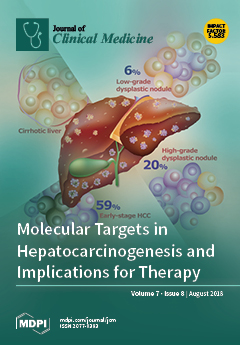This study aims to investigate the association between oxygenation saturation index (OSI) and the outcome of acute respiratory distress syndrome (ARDS) patients, and assess the predictive performance of OSI for ARDS patients’ mortality. This study was conducted at one regional hospital with 66 adult intensive care unit (ICU) beds. All patients with ARDS were identified between November 1 2016 and May 31 2018, and their clinical information was retrospectively collected. The lowest PaO
2/FiO
2 ratio and SpO
2/FiO
2 ratio and highest mean airway pressure (MAP) were recorded on the first day of ARDS; and oxygen index (OI) and OSI were calculated as (FiO
2 × MAP × 100)/PaO
2, and (FiO
2 × MAP × 100) /SpO
2 accordingly. During the study period, a total of 101 patients with ARDS were enrolled, and their mean age was 69.2 years. The overall in-ICU and in-hospital mortality rate was 57.4% and 61.4%, respectively. The patients with in-ICU mortality had higher APACHE II score than the survivors (31.6 ± 9.8 vs. 23.0 ± 9.1,
p < 0.001). In addition, mortalities had lower SpO
2, and SpO
2/FiO
2 ratios than the survivors (both
p < 0.05). In contrast, survivors had lower OI, and OSI than the mortalities (both
p = 0.008). Both OSI (area under curve (AUC) = 0.656,
p = 0.008) and OI (AUC = 0.654,
p = 0.008) had good predictive performance of mortality among ARDS patients using receiver-operating characteristics (ROC) curves analysis. In addition, the AUC of SpO
2/FiO
2 (AUC = 0.616,
p = 0.046) had better performance for mortality prediction than PaO
2/FiO
2 (AUC = 0.603,
p = 0.08). The patients with OSI greater than 12 had a higher risk of mortality than OSI < 12 (adjusted OR, 5.22, 95% CI, 1.31–20.76,
p = 0.019). In contrast, OI, PaO
2/FiO
2, and SpO
2/FiO
2 were not found to be significantly associated with increased mortality. OSI is significantly associated with the increased mortality of ARDS patients and can also be a good outcome predictor.
Full article






